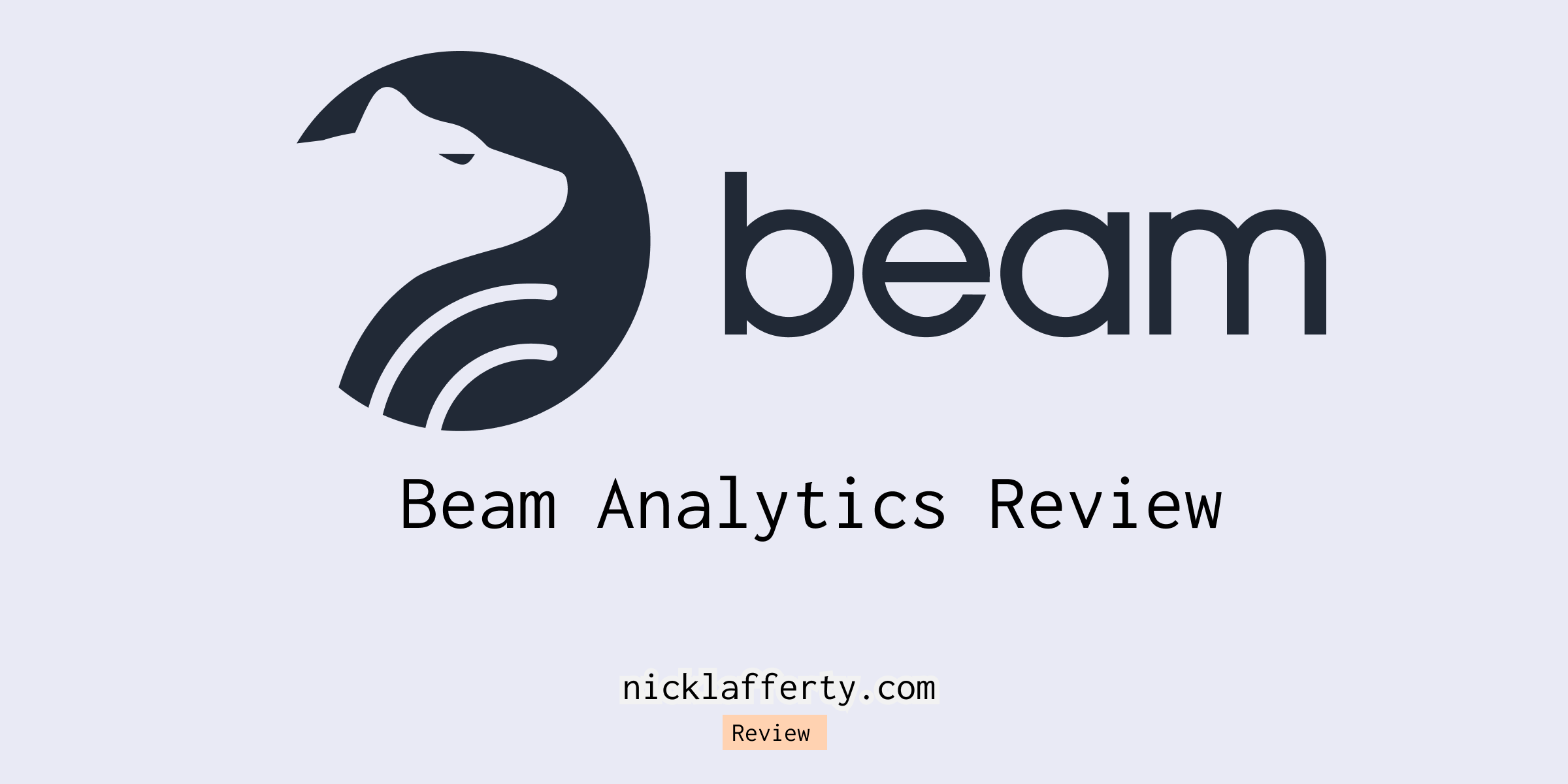A few years ago I began a journey to find a great google analytics alternative– and this was before Google forced the abomination that is GA4 upon us.
I landed on Plausible, a very nice piece of software made by two people who had a similar privacy-focused ethos to me.
But now more cookiless tracking solutions are coming to market, like Beam.
Beam is another welcome GA4 alternative that is GDPR compliant, cookie-free, and it’s great for websites like mine that want to better understand where users come from.
So that’s what this post is all about: reviewing Beam Analytics.
Real quick: Who am I?
👋 Hey, I’m Nick and I’ve been a professional growth marketer for over 10 years. I’ve helped startups like Loom and Mailgun grow through SEO, paid ads, and affiliate marketing.
In May 2023 I quit my job to consult full time for startups from Seed to Series C to help them acquire more users. I write about it in my newsletter, The Early Exit Club, and transparently share my financials every month to help demystify self-employment.
Google Analytics is a core part of my skill set, without it I’d be a pretty shitty growth marketer, so I’m well equipped to compare it to other tools.
I’m excited that there are companies like Beam on the market today to try and disrupt Google’s stranglehold on analytics tools.
Beam Review

Beam is a website tracking platform that provides everything you need to better understand where your traffic comes from, how long it stays, and if it takes your desired actions or not.
Beam Features
Beam’s core features fall into 3 buckets:
- Web Analytics
- User Funnels
- Custom Events
I’ll cover each one.
Web Analytics
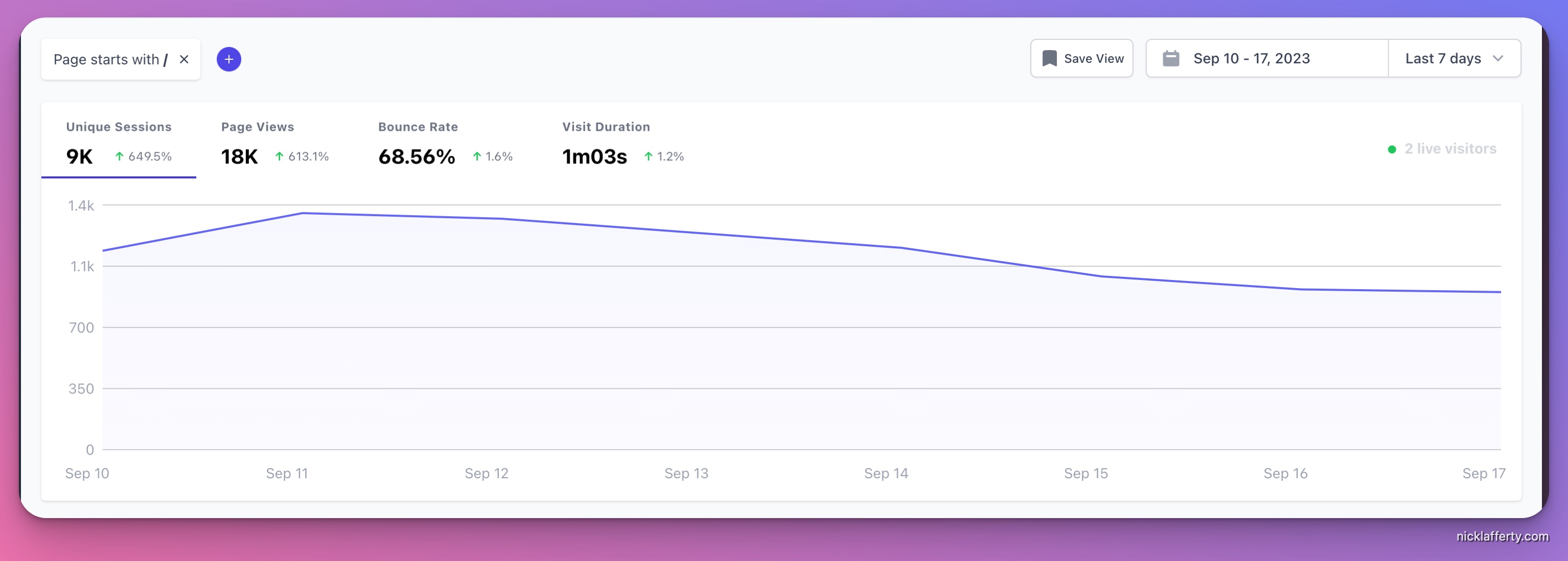
This is what you need to track how many users come to your site every day, where they come from, how long they stay, and how many pages they visit.
Beam has everything here you’d expect:
- Source tracking
- Page tracking
- Location tracking
I have Beam running on this website concurrently with Plausible and GA4 to compare the difference in the amount of tracked users.
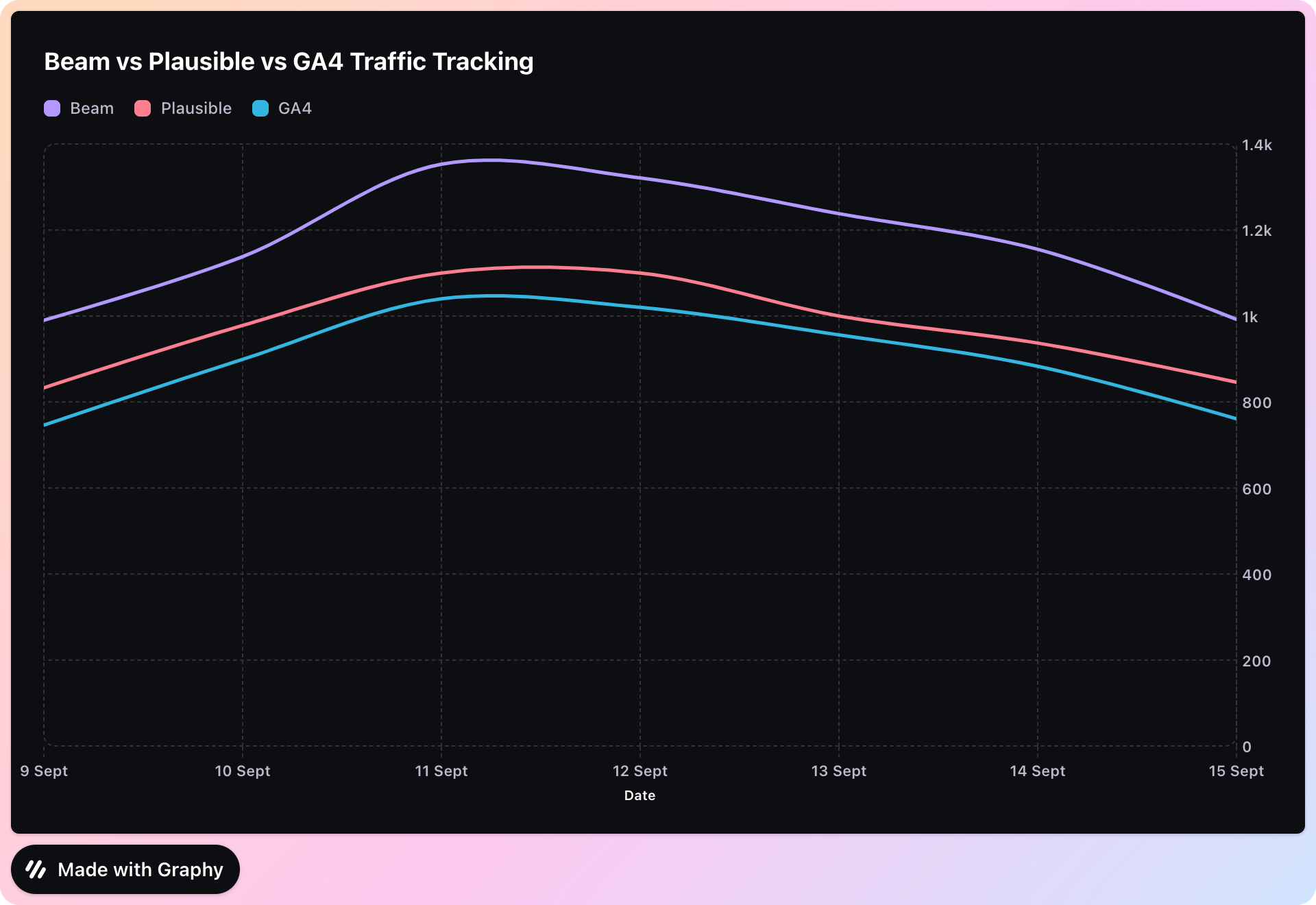
Beam tracks the most amount of users, followed by Plausible, with GA4 tracking the least.
On the surface this may seem like a good thing: more users are better, right?
Heres my theory: Both GA4 and Plausible are stripping out more bot traffic than Beam is right now.
Google Analytics, for as long as I’ve used it, has filtered out known bot and spam traffic to provide as close to a “real” traffic number as possible.
My hunch is that tools like Plausible and Beam aren’t as sophisticated yet (and I don’t blame them, Google is a multi-billion dollar company).
So the question then becomes: does it matter?
It’s likely your business doesn’t depend on having pinpoint accurate traffic stats, so I’d say it doesn’t matter.
As visible in the chart, the trends are the same. Traffic goes up and down across all 3 tools in roughly the same way.
I pay closest attention to trends for my site:
- Week over week
- Month over month
- Year over year
And in that respect, Beam does a very fine job.
I’d be comfortable relying on Beam to track and accurately report on my website traffic.
User Funnels
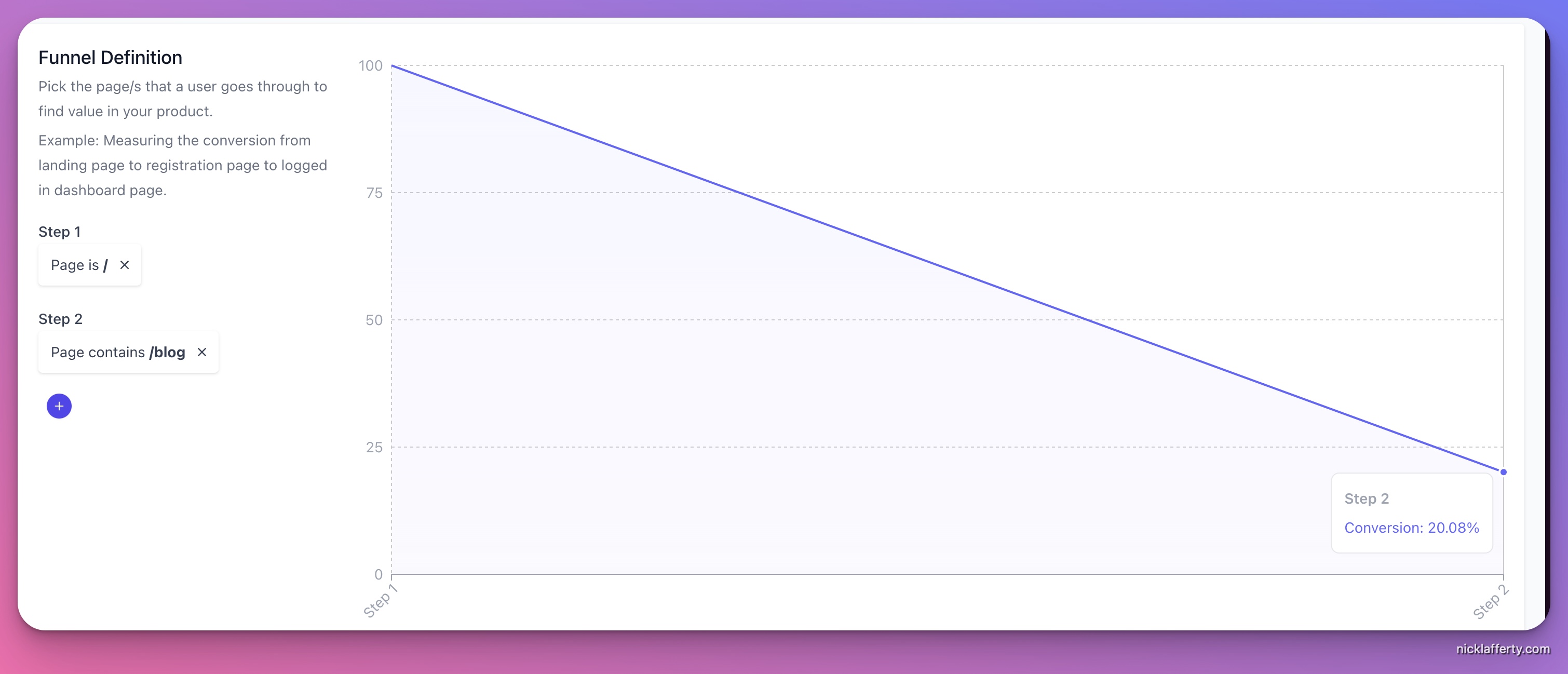
What are user funnels and why are they important?
User funnels help you understand the flow of traffic through your site.
Where do they start? Where do they end up?
What % of users start on your home page and make it to a specific page on your blog?
These are all important questions to answer if you want to track and improve the performance of your website.
Beam lets you do this which is very cool.
In my above screenshot, only 20% of users who visit my homepage make it to any blog page.
I only showed a one-step user funnel but you could add more steps to see how users progress through your most valuable pages.
A common SEO strategy is to rank for high-volume keywords and when users land on that page, you link to a money-page (one that literally makes you money).
So you really want to measure the flow of people that follow your ideal path, and Beam lets you do that with ease.
Custom Events
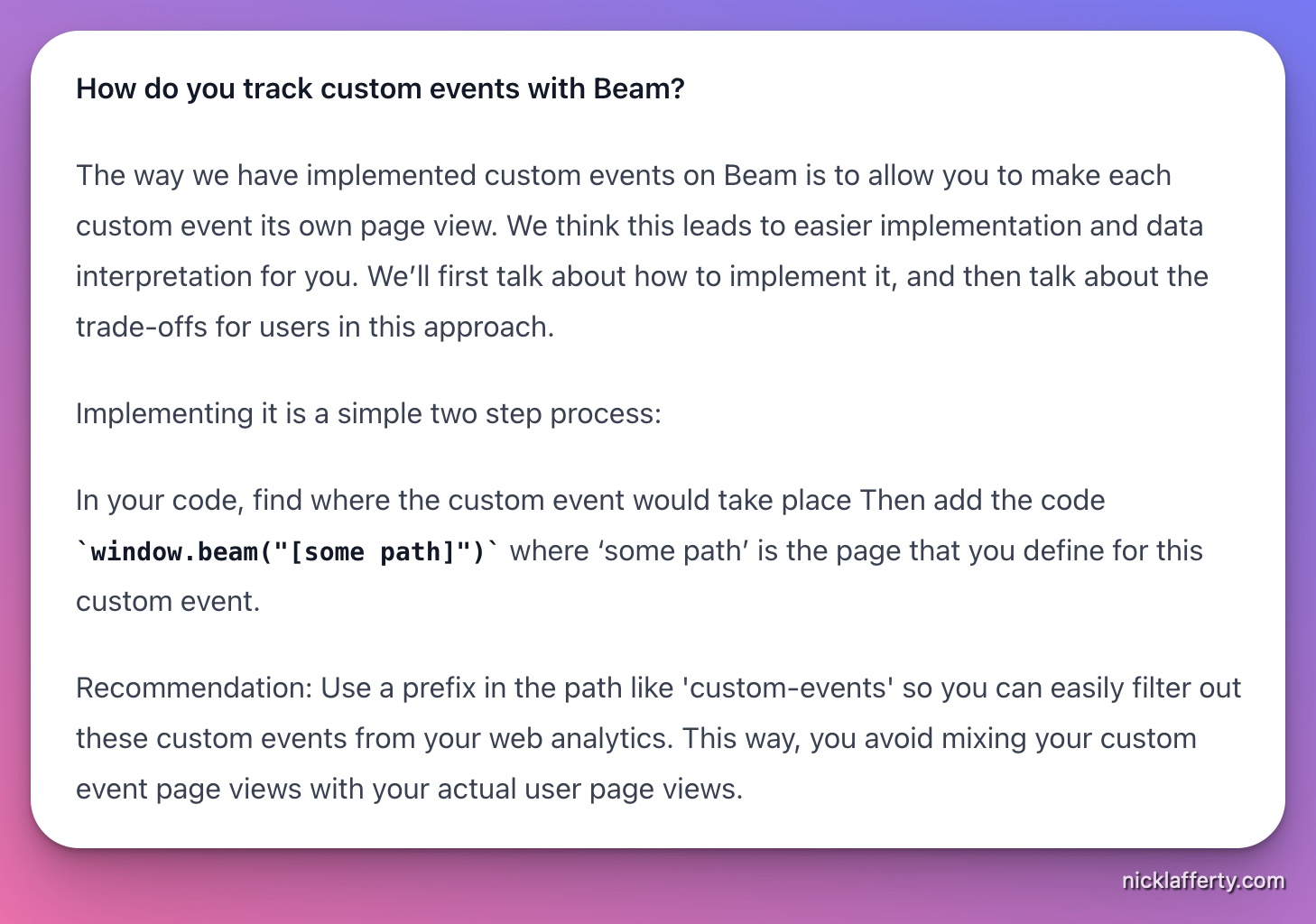
Custom events let you track specific actions that users take on your site that you define.
Most commonly this is a conversion or purchase action.
But it honestly could be anything:
- Sign ups
- Button clicks
- Scroll depth
- Clicks on external links
In my job I’ve most commonly used these to track purchase events so I can tie it back to ad spend.
I want to know how many purchases my Google Ads campaigns generated, and Beam lets you track that.
These events are rolled up to other dimensions within Beam like sources and pages, so you can see how many custom events fire from Google, Bing, Pinterest, or on your highest trafficked page.
One limitation right now: Beam doesn’t support revenue tracking yet.
Beam Pricing

Beam’s generous free plan is perfect for small hobby projects, bloggers, or anyone who doesn’t want to add yet another saas subscription to their credit card.
You can track 100,000 page views every month for free.
And if you go over, Beam asks you to pay a reasonable $11/month.
Beam Analytics vs Plausible
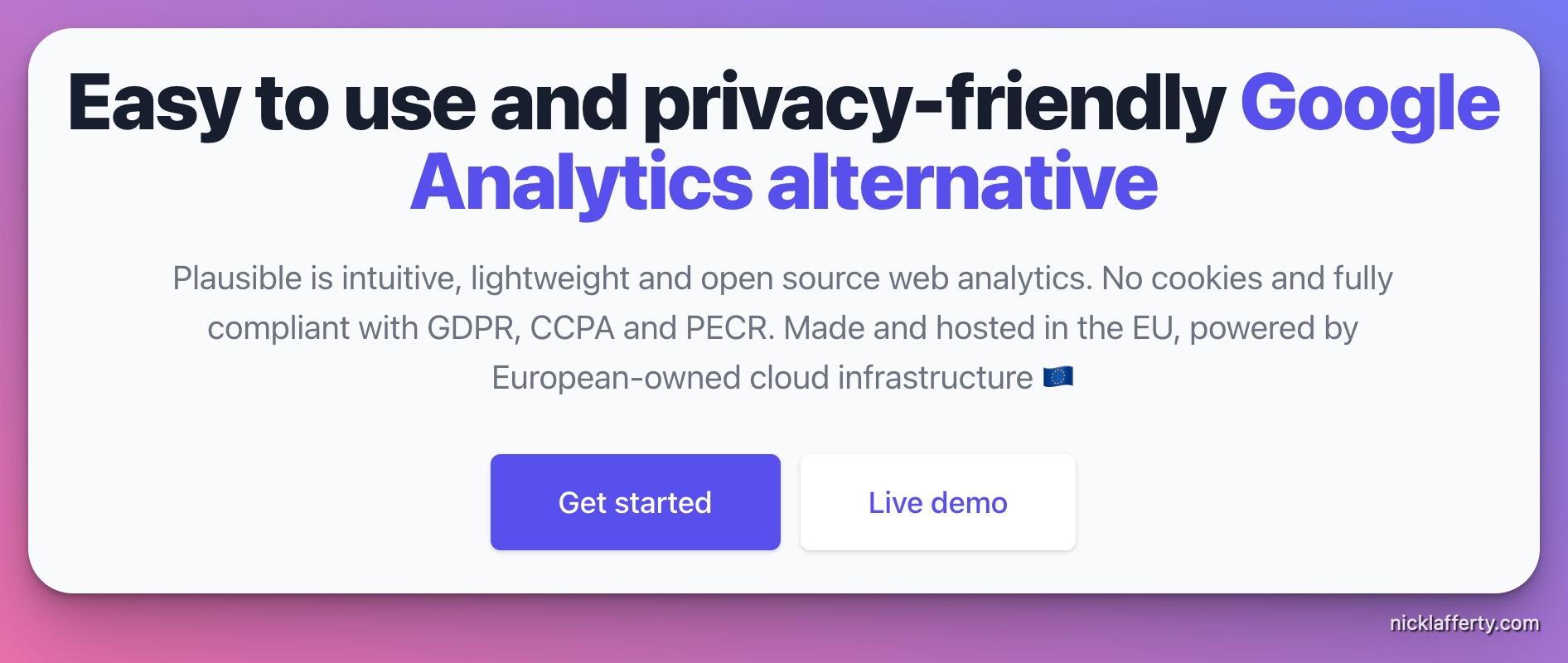
Before we dig in to how Beam compares to Plausible, I want to call something out.
Plausible is a more mature tool. They had about a 2-3 year head start and should be expected to have a few more features tht Beam doesn’t have yet.
The main question I want to answer is: are those features enough to make paying for Plausible worth it over Beam?
What Plausible Has
Here are the features that Plausible has that beam doesn’t.
Revenue Tracking
![]()
This might be a deal breaker for sites that depend on tracking the value of each conversion.
Plausible supports revenue tracking for converison goals and Beam does not (yet).
But like funnel tracking, Revenue tracking is also an upcoming premium feature.
But if you absolutely need to track revenue then Plausible is the better choice for now.
Dark mode
Arguably the least important feature as it’s just a recolor of the dashboard, but important to note that Beam does not have dark mode :)
Date Range Shortcuts & Compare
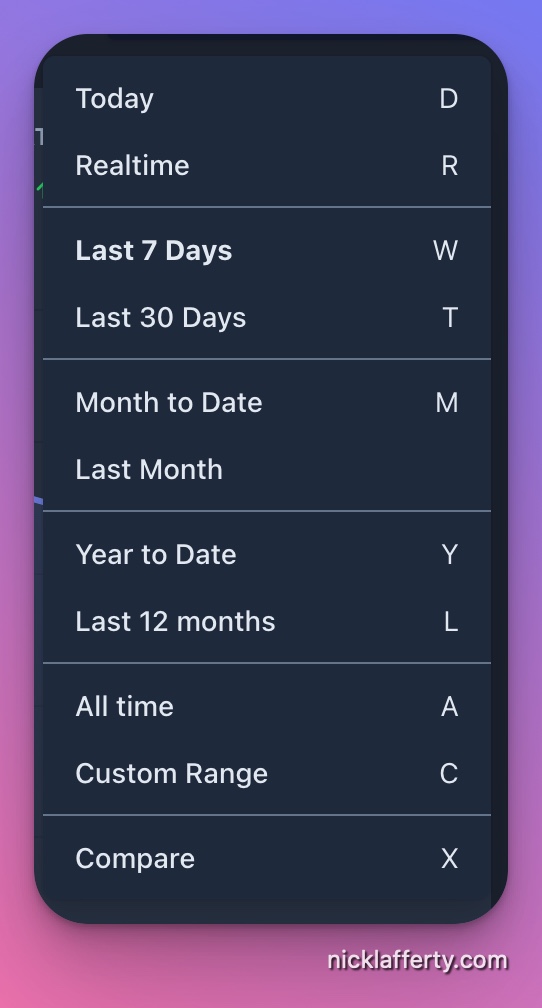
This is another small quality of life thing but Plausible let’s you quickly update the date range for your time series charts via keyboard shortcuts.

Plausible also lets you compare date ranges which is very helpful for monitoring trends.
What Plausible Doesn’t Have
Here are the features that Beam has and plausible doesn’t.
User Funnels
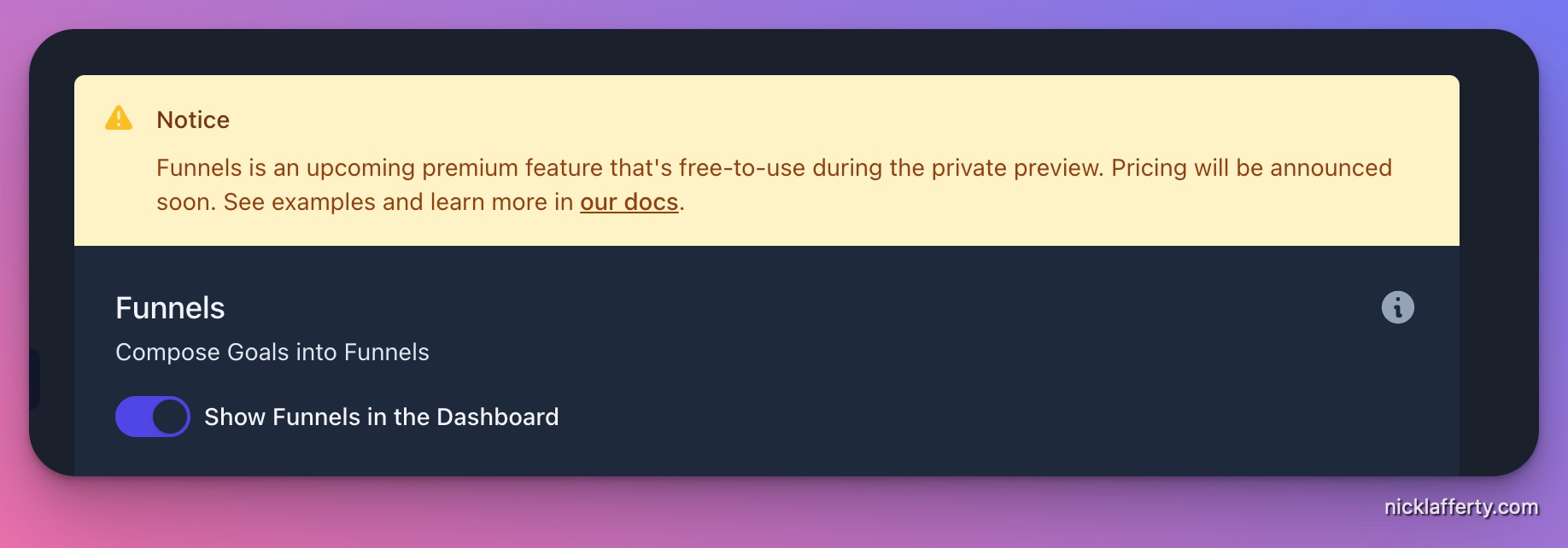
Plausible recently launched user funnels but the plan is to reserve it as a premium feature that will cost extra.
Beam’s funnels are available to everyone, including free users.
Funnels are very useful for website owners to measure how traffic flows between pages on your website.
Custom Views
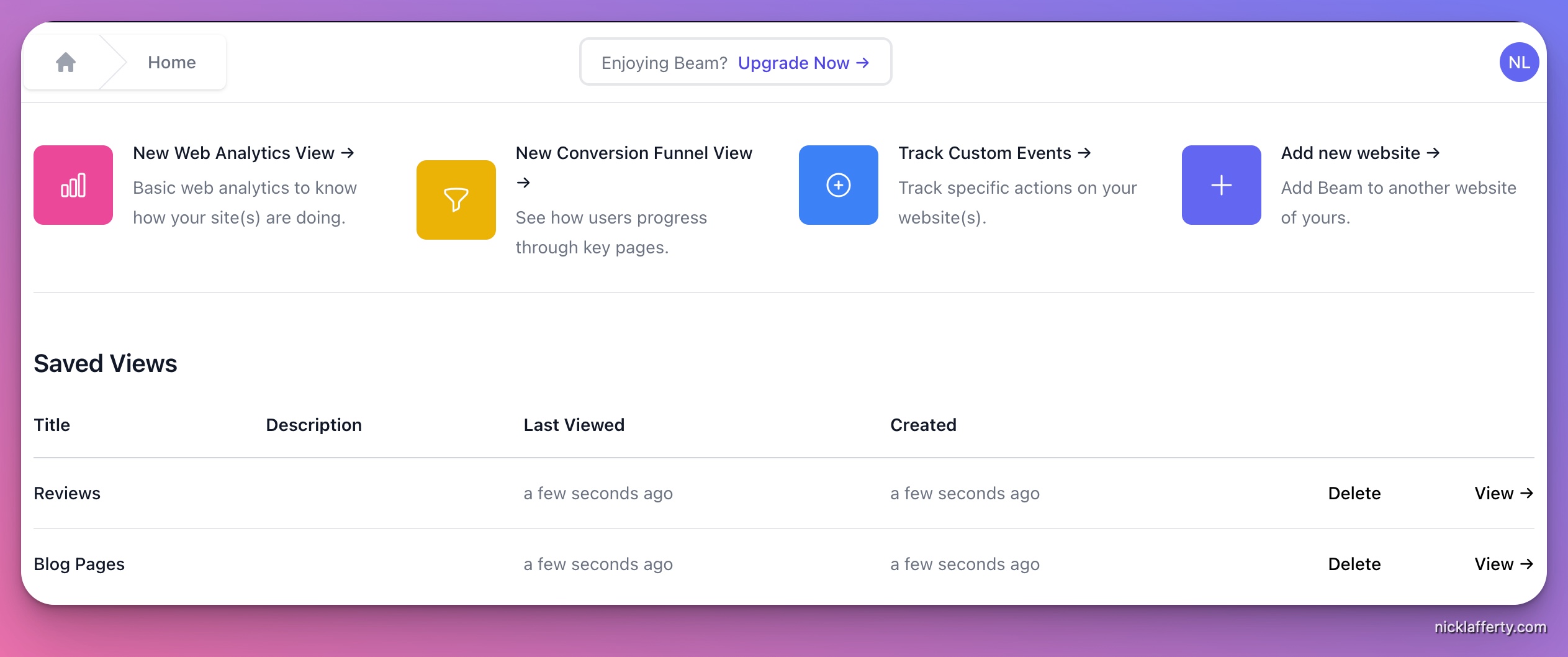
Beam allows you to create custom views and Plausible does not.
Custom views are ways to save specific segments of your traffic so you can easily review them later.
This is helpful if you have multiple sections or areas of your site that you want to keep an eye on.
Maybe you have a blog section and a review section (like me).
Or maybe your site is in 4 different languages and you want to measure each one separately.
It’s the kind of flexibility that serious sites start to require and it’s really nice that Beam has this feature.
Beam vs Plausible: Pricing

Here’s where it gets interesting.
Plausible has no free plan available.
They start at $9/month to track 10,000 users.
Beam has a very generous free plan where you can track 100k visitors/month for free.
This means that for most websites Beam is the more affordable option.
Wrapping Up
Beam and Plausible are both great analytics tools for modern websites that want a cookieless, privacy-focused solution.
I’ve been paying for Plausible for the past two years and I’ve been very happy with it.
But if I were staring over right now, I’d choose Beam simply due to the generosity of their free plan.
